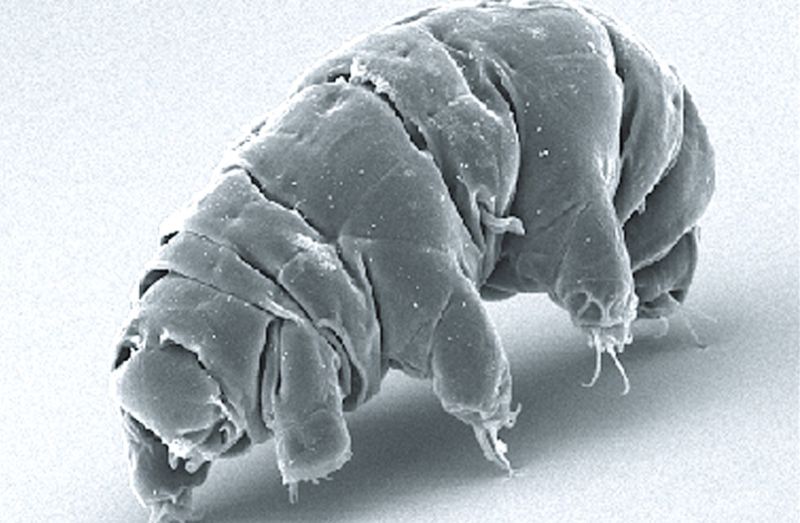

reader comments
97 with 62 posters participating
Tardigrades, more commonly known as “water bears,” are microscopic creatures capable of surviving the harshest extreme conditions. In fact, they were the first animal to survive in the vacuum of space in 2007. Now, it seems, they might be ready to colonize the Moon. BBC News reports that an Israeli spacecraft carrying the tiny creatures in a state of dehydration crash-landed on the Moon back in April. All they need is a bit of water to reanimate, and voila! We’d have a colony of lunar tardigrades.
First described by German zoologist Johann Goeze in 1773, they were dubbed tardigrada (“slow steppers” or “slow walkers”) four years later by Lazzaro Spallanzani, an Italian biologist. That’s because tardigrades tend to lumber along like a bear. Since they can survive almost anywhere, they can be found in lots of places: deep-sea trenches, salt and freshwater sediments, tropical rain forests, the Antarctic, mud volcanoes, sand dunes, beaches, and lichen and moss. (Another name for them is “moss piglets,” immortalized in a 2017 South Park episode where the gang teaches tardigrades to dance to Taylor Swift songs for science class.)
They’re not technically members of the extremophile class of organisms since they don’t so much thrive in extreme conditions as endure, but they can endure for an impressively long time. Their secret? They can suspend their metabolism, enabling them to go without food or water for 30 years or more, and they can survive dehydrated for at least five years. Once revived, they go on with their lives, even capable of reproducing to replenish their numbers.
ZWIDI Samih


